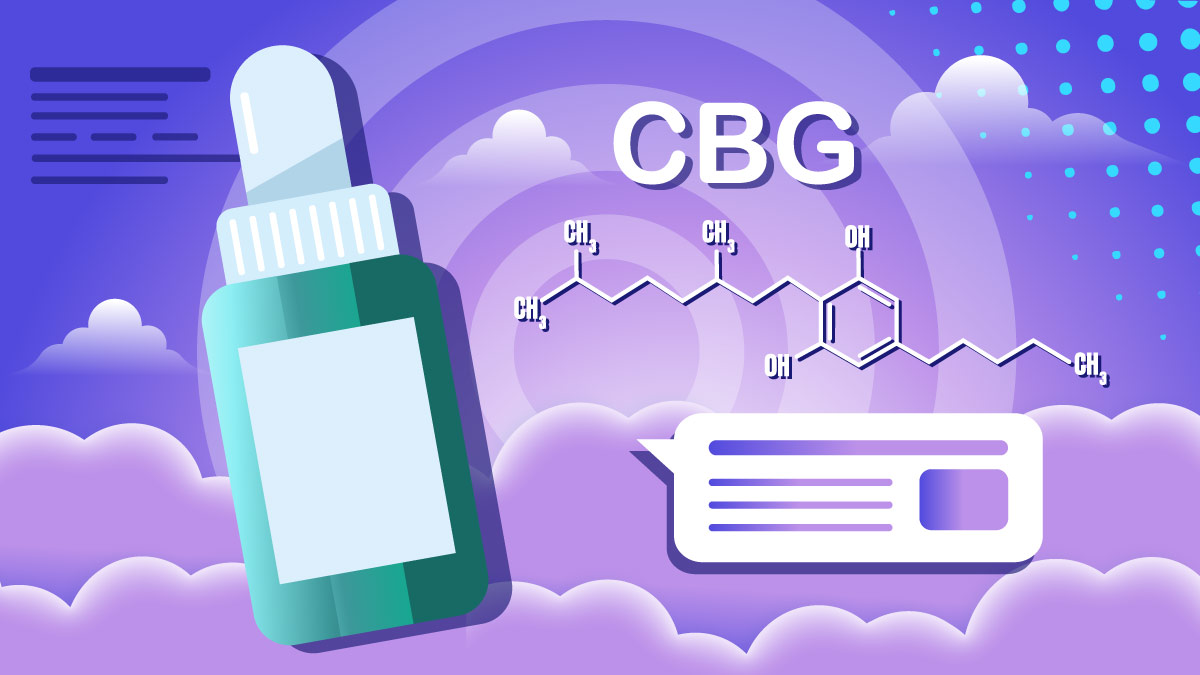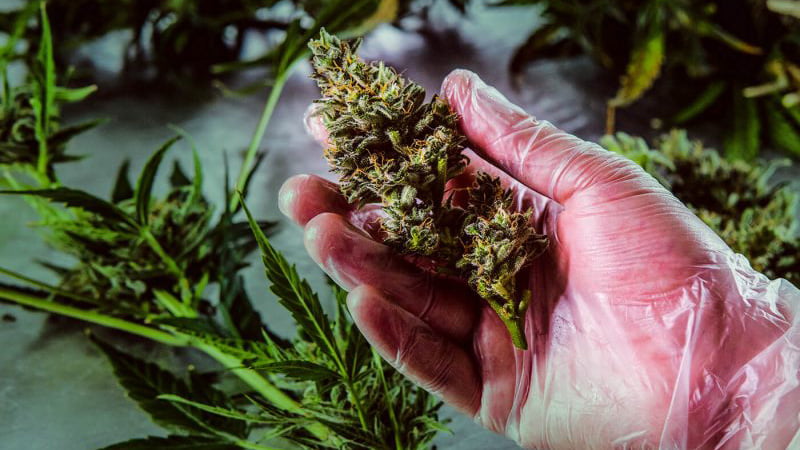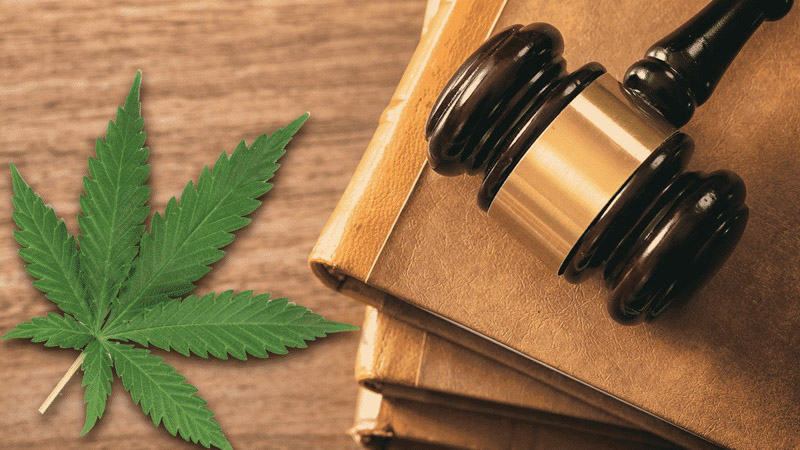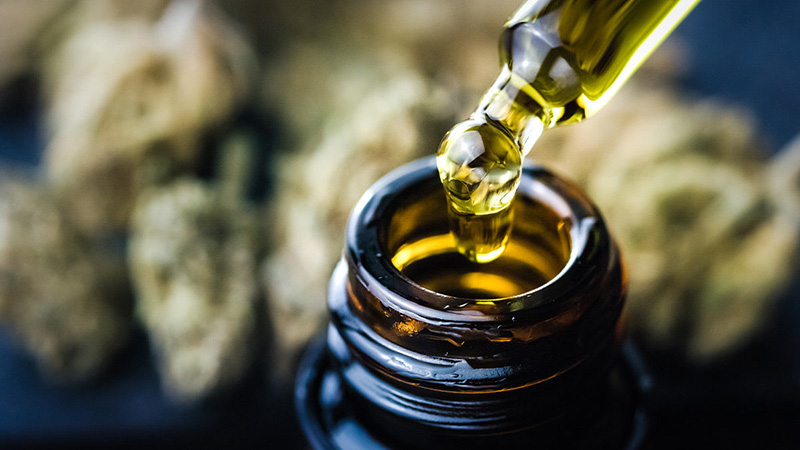What is CBG? Uses, Benefits and Effects

CBG is another cannabinoid after CBD and delta 8 THC that is making big headlines in the wellness industry.
Derived from the so-called mother of cannabinoids, CBG edibles can increase your energy levels, enhance productivity, relieve stress, — but without the high associated with THC.
CBG also has several potential health benefits that could be used as an adjunctive treatment for a wide range of physical and mental ailments.
In this article, I’ll elaborate on CBG’s therapeutic potential, how it compares to CBD, and how to get the most out of your CBG supplementation.
What Is CBG?

CBG stands for cannabigerol — a cannabinoid found in mariuana and hemp.
All cannabis plants make CBG. The difference between hemp and marijuana lies in how each plant processes CBG.
Marijuana plants synthesize more enzymes that convert CBG to THC, whereas hemp has more enzymes that convert CBG to CBD.
All cannabinoids come from the acidic form of CBG — cannabigerolic acid (CBGA).
CBG is non-psychoactive with some similar features to CBD and THC due to its interaction with cannabinoid receptors.
While it won’t get you high, it can produce a mild cognitive effect similar to delta 8 THC. You may feel more in-tune or focused on whatever you’re working on without overstimulating your brain too much.
That’s why CBG has become the next big thing to boost concentration and productivity among neurohackers, biohackers, and other health-conscious users.
Is CBG Psychoactive?
CBG is non-intoxicating, so it won’t get you high.
While for some people this may be a disappointment, it opens up CBG for more general use, helping cannabis tear into the mainstream media.
People can take CBG during regular working days or school activities to reap its mental benefits without getting high off of such products.
How Is CBG Extracted?
CBG isn’t a major cannabinoid. Cannabis plants that are ripe enough for harvest usually contain around 1% of CBG — a very modest amount compared to how much THC or CBD you can get from hemp or marijuana.
Fortunately, creative manufacturers have found a workaround for extracting large quantities of CBG without using a ridiculously large amount of cannabis biomass.
CBG is extracted from young marijuana or hemp plants before their enzymes convert it to other cannabinoids.
Recently, scientists have made advancements in the genetic engineering of cannabis plants to produce more CBG naturally, making it less of an effort to produce consumable CBG extracts.
What Does CBG do for the Body?
Like other cannabinoids, CBG works by interacting with the endocannabinoid system (ECS). This system is composed of two types of receptors — CB1 and CB2 — endocannabinoids, and metabolic enzymes.
As a whole, the ECS works to promote and maintain homeostasis throughout the body. All organisms except for some forms of sea life have an endocannabinoid system — not just human beings.
Now to the cannabinoid receptors.
The CB1 receptors occur in the central and peripheral nervous system, engaging with your brain’s neurotransmitters, while CB2 receptors are primarily found in the immune system and organs.
CBG binds to both types of cannabinoid receptors, but it doesn’t activate them. That makes it functionally different from THC, which binds and activates them — nor like CBD, which doesn’t directly bind to either of these receptors.
Is CBG Natural?
Yes, CBG is a completely natural compound and forms during the early growth stages of the cannabis plant. Some potential confusion around CBG’s natural status comes from the process used to pull it from the cannabis plant.
Since CBG occurs in cannabis in low concentrations, CBG producers use advanced extraction technologies, usually involving CO2 or ethanol, to extract significant amounts of CBG from hemp or marijuana.
Is CBG Legal?

CBG is legal, but its actual status isn’t that obvious.
CBG isn’t a scheduled drug under the United Nations Convention on Psychotropic Substances of 1971. In other words, it’s not internationally regulated, so countries don’t have to impose any restrictions on it within their jurisdiction.
According to the Controlled Substances Act, CBG sourced from marijuana is federally illegal, while CBG that comes from hemp is legal.
The 2018 Farm Bill federally legalized hemp and all its derivatives, including CBG.
As long as hemp-derived products contain 0.3% or less THC, they can be legally sold online and in brick-and-mortar stores.
Make sure to always double-check the THC content of your product. If you live in a state where marijuana is legal for recreational use, some CBG products may contain additional amounts of delta 8 or delta 9 THC.
What’s the Difference Between CBG vs. CBD?
From a chemical standpoint, CBG and CBD are quite similar. Both molecules contain exclusively carbon, hydrogen, and oxygen — and they have a similar chemical structure.
However, there are significant biological differences between both compounds.
Here’s what you need to know.
1. CBG vs. CBD: Effects & Benefits
CBG and CBD have different manner of interacting with the ECS. CBG interacts with CB1 and CB2 receptors, while CBD doesn’t directly engage with them.
This, in turn, provides CBG and CBD with different pharmacological effects.
That being said, they also have some similar effects; the most visible one is that CBD and CBG users report that cannabinoids help them manage anxiety and stress.
CBD is generally more recommended for pain and inflammation, while CBG works better for increasing your focus and attention span.
2. CBG vs. CBD: Medical Research
CBD is definitely more researched than CBG when it comes to medical benefits.
CBD has been highlighted by many studies as a potent anti-inflammatory and anti-oxidant that can be used in a wide range of conditions, from inflammation to chronic pain, depression, anxiety, addiction, diabetes, autoimmune disorders, and neurodegeneration.
The research on CBG is scarce, but the current findings suggest it may help with:
- Appetite loss
- Bacterial infections
- Bladder dysfunctions
- Cancer
- Glaucoma
- Huntington’s disease
- Inflammatory bowel disease
While the above list looks promising, it’s important to remember that studies only suggest these benefits. Much more research is needed to fully understand how CBG affects our health.
3. CBG vs. CBD: Availability
That’s perhaps the biggest difference between CBG and CBD. Producing CBD takes around 20 times less plant matter than making the same amount of CBG, making CBD prices lower.
Until there’s a major breakthrough in CBG production methods, CBG won’t match CBD’s popularity.
How to Enhance the Effects of CBG

If you’re considering adding CBG to your daytime routine and reaping the benefits from the cognitive boost, you can do a few other things to increase its effectiveness even more.
1. Only Use CBG When You Need It
First and foremost, you should only use CBG when you really need it. Since CBG binds to CB1 receptors, it can desensitize them over time, making the effects less pronounced.
Save CBG for when you have the most challenging mental activities ahead of you or are entering an intense period at work.
2. Build Good Lifestyle Habits
The second most important aspect of maximizing the benefits of CBG is to include other productivity-enhancing habits into your daily life. Getting enough quality sleep, eating nutritious food, and moving around regularly will help you improve your mental clarity and concentration.
Challenge yourself to be as productive as you can. When you take CBG, it will put you in a better place than it otherwise would, so when you’re already productive, CBG can give you that extra finish that you need to be the best version of your working self.
3. Introduce Stress-Reduction Practices
Stress management is paramount if you want to keep your mental health in one piece. Daily meditation, mindfulness, and journaling are excellent ways to reduce stress and lower cortisol levels, which are associated with better cognitive function. Journaling can be especially beneficial if you’re a “thinker” type and often struggle with racing thoughts.
Final Thoughts: What is CBG?
CBG is one of the supportive cannabinoids that occur in hemp and marijuana in small amounts. It has similar effects to CBD but is considered better for boosting focus, cognition, and productivity.
Alas, CBG products are much harder to spot than CBD supplements due to the aforementioned difficulties in production. CBG takes approximately 20 times more plant matter than CBD, making it expensive to produce even small batches of CBG extracts.
Despite promising advancements in extraction methods, we still have a long way to go if we want CBG products to be as accessible as the more popular cannabinoids.
Overall, CBG can be a great supplement to help you stay in the zone and do more stuff around you but don’t expect it to be cost-efficient or work wonders.
Sources:
- Atalay, S., Jarocka-Karpowicz, I., & Skrzydlewska, E. (2019). Antioxidative and Anti-Inflammatory Properties of Cannabidiol. Antioxidants (Basel, Switzerland), 9(1), 21. https://doi.org/10.3390/antiox9010021 [1]
- Schilling, J. M., Hughes, C. G., Wallace, M. S., Sexton, M., Backonja, M., & Moeller-Bertram, T. (2021). Cannabidiol as a Treatment for Chronic Pain: A Survey of Patients’ Perspectives and Attitudes. Journal of pain research, 14, 1241–1250. https://doi.org/10.2147/JPR.S278718 [2]
- Silote, G. P., Sartim, A., Sales, A., Eskelund, A., Guimarães, F. S., Wegener, G., & Joca, S. (2019). Emerging evidence for the antidepressant effect of cannabidiol and the underlying molecular mechanisms. Journal of chemical neuroanatomy, 98, 104–116. https://doi.org/10.1016/j.jchemneu.2019.04.006 [3]
- Blessing, E. M., Steenkamp, M. M., Manzanares, J., & Marmar, C. R. (2015). Cannabidiol as a Potential Treatment for Anxiety Disorders. Neurotherapeutics: the journal of the American Society for Experimental NeuroTherapeutics, 12(4), 825–836. https://doi.org/10.1007/s13311-015-0387-1
- Prud’homme, M., Cata, R., & Jutras-Aswad, D. (2015). Cannabidiol as an Intervention for Addictive Behaviors: A Systematic Review of the Evidence. Substance abuse: research and treatment, 9, 33–38. https://doi.org/10.4137/SART.S25081
- Jadoon, K. A., Ratcliffe, S. H., Barrett, D. A., Thomas, E. L., Stott, C., Bell, J. D., O’Sullivan, S. E., & Tan, G. D. (2016). Efficacy and Safety of Cannabidiol and Tetrahydrocannabivarin on Glycemic and Lipid Parameters in Patients With Type 2 Diabetes: A Randomized, Double-Blind, Placebo-Controlled, Parallel Group Pilot Study. Diabetes care, 39(10), 1777–1786. https://doi.org/10.2337/dc16-0650
- Nichols, J. M., & Kaplan, B. (2020). Immune Responses Regulated by Cannabidiol. Cannabis and cannabinoid research, 5(1), 12–31. https://doi.org/10.1089/can.2018.0073
- Cassano, T., Villani, R., Pace, L., Carbone, A., Bukke, V. N., Orkisz, S., Avolio, C., & Serviddio, G. (2020). From Cannabis sativa to Cannabidiol: Promising Therapeutic Candidate for the Treatment of Neurodegenerative Diseases. Frontiers in pharmacology, 11, 124. https://doi.org/10.3389/fphar.2020.00124 [8]
- Brierley, D. I., Samuels, J., Duncan, M., Whalley, B. J., & Williams, C. M. (2016). Cannabigerol is a novel, well-tolerated appetite stimulant in pre-satiated rats. Psychopharmacology, 233(19-20), 3603–3613. https://doi.org/10.1007/s00213-016-4397-4 [9]
- Appendino, G., Gibbons, S., Giana, A., Pagani, A., Grassi, G., Stavri, M., Smith, E., & Rahman, M. M. (2008). Antibacterial cannabinoids from Cannabis sativa: a structure-activity study. Journal of natural products, 71(8), 1427–1430. https://doi.org/10.1021/np8002673
- Pagano, E., Montanaro, V., Di Girolamo, A., Pistone, A., Altieri, V., Zjawiony, J. K., Izzo, A. A., & Capasso, R. (2015). Effect of Non-psychotropic Plant-derived Cannabinoids on Bladder Contractility: Focus on Cannabigerol. Natural product communications, 10(6), 1009–1012.
- Borrelli, F., Pagano, E., Romano, B., Panzera, S., Maiello, F., Coppola, D., De Petrocellis, L., Buono, L., Orlando, P., & Izzo, A. A. (2014). Colon carcinogenesis is inhibited by the TRPM8 antagonist cannabigerol, a Cannabis-derived non-psychotropic cannabinoid. Carcinogenesis, 35(12), 2787–2797. https://doi.org/10.1093/carcin/bgu205
- Nadolska, K., & Goś, R. (2008). Mozliwości zastosowania kannabinoidów w leczeniu jaskry [Possibilities of applying cannabinoids’ in the treatment of glaucoma]. Klinika oczna, 110(7-9), 314–317.
- Valdeolivas, S., Navarrete, C., Cantarero, I., Bellido, M. L., Muñoz, E., & Sagredo, O. (2015). Neuroprotective properties of cannabigerol in Huntington’s disease: studies in R6/2 mice and 3-nitropropionate-lesioned mice. Neurotherapeutics: the journal of the American Society for Experimental NeuroTherapeutics, 12(1), 185–199. https://doi.org/10.1007/s13311-014-0304-z
- Borrelli, F., Fasolino, I., Romano, B., Capasso, R., Maiello, F., Coppola, D., Orlando, P., Battista, G., Pagano, E., Di Marzo, V., & Izzo, A. A. (2013). Beneficial effect of the non-psychotropic plant cannabinoid cannabigerol on experimental inflammatory bowel disease. Biochemical pharmacology, 85(9), 1306–1316. https://doi.org/10.1016/j.bcp.2013.01.017